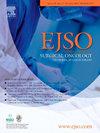欧洲宫颈癌筛查成本效益研究的系统性回顾。
IF 2.9
2区 医学
Q2 ONCOLOGY
引用次数: 0
摘要
导言宫颈癌(CC)是一种晚期诊断预后不良的癌症,对社会经济造成沉重负担。欧洲各国的发病率差异很大,这取决于筛查、疫苗接种计划的实施与否以及人类发展指数(HDI)。大多数关于CC筛查项目成本效益的研究都是在人类发展指数较高的国家进行的,而最近对筛查方法的审查则来自于人类发展指数较低的国家,目的是找出最佳的筛查策略。我们的研究旨在确定欧洲目前采用的最具成本效益的 CC 筛查策略:这是一项在三个不同数据库(PubMed、Scopus 和 ScienceDirect)中进行的系统性综述,并按照 PRISMA 指南进行报告。所有数据库的一般关键术语如下:成本效益、宫颈癌、筛查、欧洲。我们纳入了过去 25 年中发表的英语、意大利语、西班牙语和保加利亚语研究,这些研究报告了宫颈癌筛查的成本效益、成本和结果测量数据。我们使用标准化工具对文章的方法学质量进行了评估:结果:共确定了 262 项研究,22 项研究被纳入最终分析。在90.1%的经济学研究中,新筛查策略与当前策略相比或与不筛查相比更具成本效益。最佳策略大多涉及初级人类乳头瘤病毒检测,与细胞学检查相结合或作为独立的筛查技术。研究发现,CC 筛查的起始年龄和周期、技术组合和分流等几种方案都具有成本效益,且低于支付意愿(WTP)阈值。所有纳入研究的方法在 JBI 标准化工具和 Drummond 11 点检查表中均被评为 10 至 11 分:本系统综述确定了欧洲不同国家许多具有成本效益的CC筛查方案。主要从 30 岁开始、每 5 年或更长时间重复一次的 HPV 检测(无论是否进行细胞学检查)是最具成本效益的技术。今后的研究应侧重于针对不同情况和环境的最合适的 CC 筛查方法,同时考虑欧洲的 HPV 疫苗接种情况。本文章由计算机程序翻译,如有差异,请以英文原文为准。
Systematic review of cost-effectiveness studies on cervical cancer screening across Europe
Introduction
Cervical cancer (CC) is a type of cancer with poor prognosis when diagnosed in advanced stage with a big socioeconomic burden. The incidence rates have wide variations among European countries depending on the implementation or not of screening, vaccination programs and the human development index (HDI). Most studies on cost-effectiveness of CC screening programs are carried out in countries with a high HDI, however more recent reviews of screening approaches are coming from countries with lower HDI aiming to identify the best screening strategies. Our study aims to identify which are the currently applied and most cost-effective strategies of CC screening in Europe.
Materials and methods
This is a systematic review conducted in three different databases (PubMed, Scopus and ScienceDirect) and reported following the PRISMA guidelines. General key terms for all databases were the following: cost-effectiveness, cervical cancer, screening, Europe. We included studies in English, Italian, Spanish and Bulgarian, published in the last 25 years, reporting data on cost-effectiveness of CC screening, costs and outcome measures. The methodological quality of the articles was evaluated with a standardized tool.
Results
A total of 262 studies were identified and 22 studies were included in the final analysis. In 90.1 % of the economic studies, the new screening strategy was shown to be more cost-effective compared to the current one or compared to no screening. The optimal strategy mostly involved primary HPV testing, combined with cytology or as stand-alone screening technique. Several scenarios differing on starting age and periodicities for CC screening, combination of techniques and triage, were found to be cost-effective and below the willingness to pay (WTP) threshold. The methodology of all included studies was assessed from 10 to 11 on the JBI standardized tool and Drummond 11-point checklist.
Conclusion
Numerous cost-effective options for CC screening in different European countries were identified in this systematic review. HPV testing, with or without cytology, mainly starting at 30 years of age and repeated every 5 years or more was the most cost-effective technique. Future studies should focus on the most appropriate CC screening approach for each context and setting, also considering HPV vaccination in Europe.
求助全文
通过发布文献求助,成功后即可免费获取论文全文。
去求助
来源期刊

Ejso
医学-外科
CiteScore
6.40
自引率
2.60%
发文量
1148
审稿时长
41 days
期刊介绍:
JSO - European Journal of Surgical Oncology ("the Journal of Cancer Surgery") is the Official Journal of the European Society of Surgical Oncology and BASO ~ the Association for Cancer Surgery.
The EJSO aims to advance surgical oncology research and practice through the publication of original research articles, review articles, editorials, debates and correspondence.
 求助内容:
求助内容: 应助结果提醒方式:
应助结果提醒方式:


